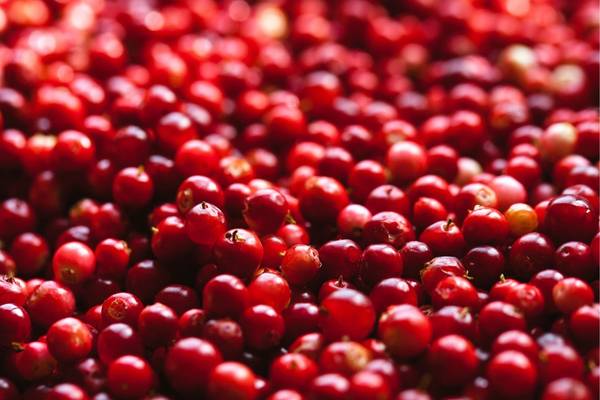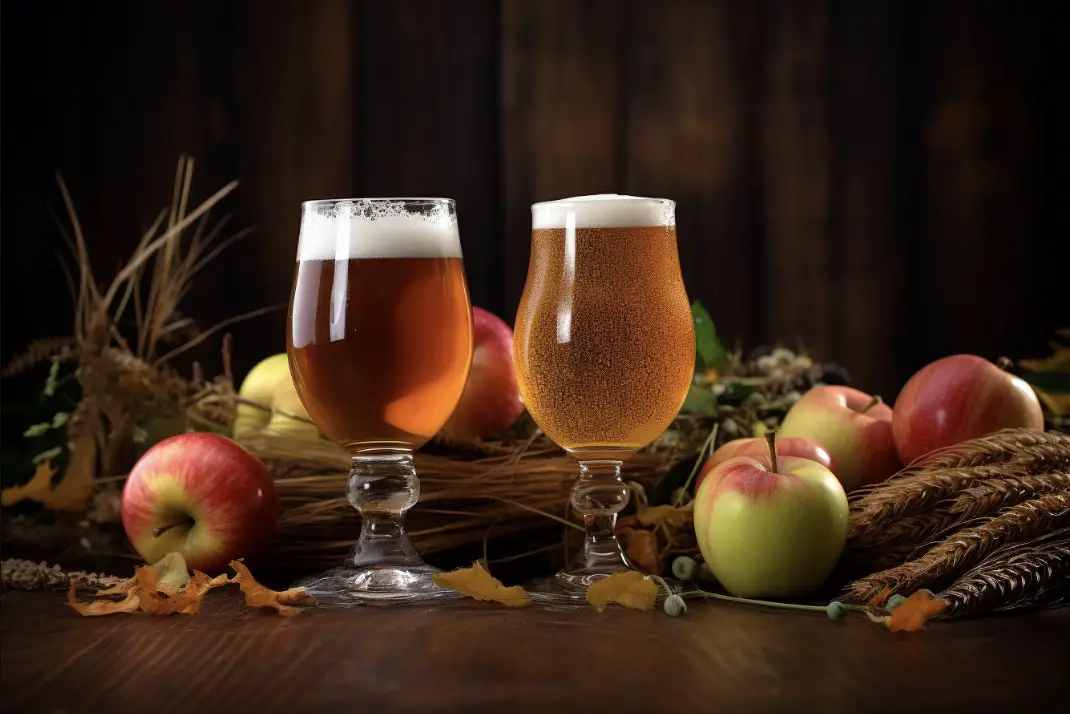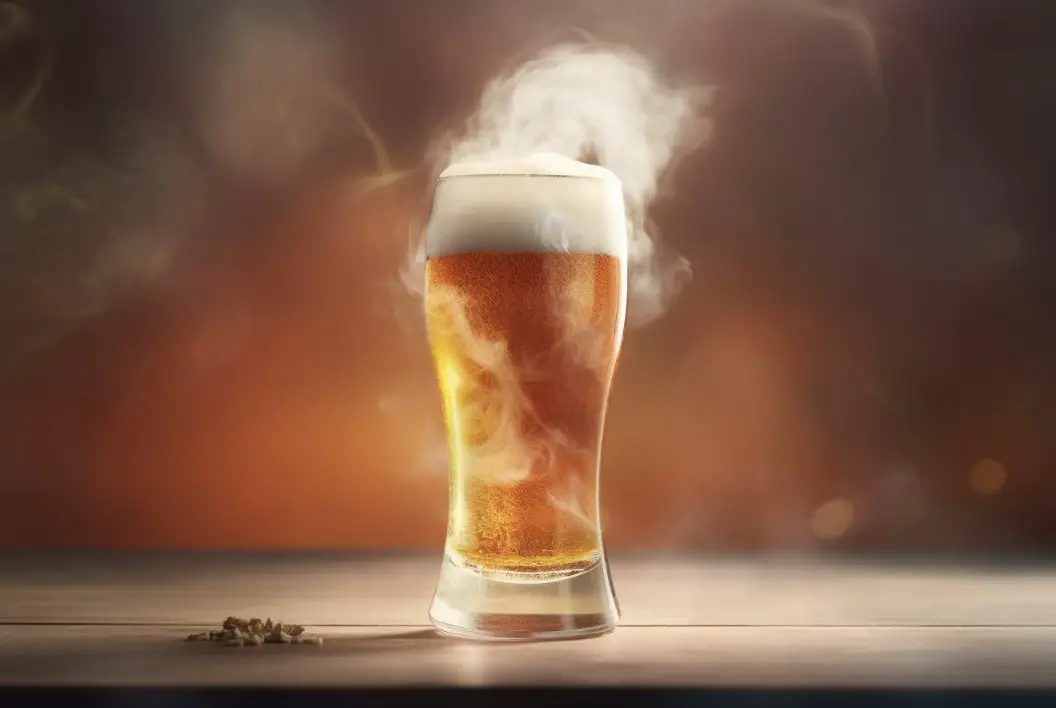Have you ever wanted to turn cranberry juice into your own homemade alcohol? If so, you’ve come to the right place.
Average cranberry juice can be fermented into a wine or cider with about 5% alcohol. Like other fruit juices, it will ferment when you add yeast to it. If you want higher alcohol percentages in your cranberry cider or wine, just add some extra sugar!
So, let’s get the party started and find out how to turn cranberry juice into alcohol!
Yes, you can make cranberry wine or cider!
Yes, you can definitely make alcohol from cranberry juice or fresh cranberries. You can make a variety of fermented beverages like cranberry wine or hard cider out of cranberries!
Cranberry wine is made just the same way that any other fruit wine is made – by taking freshly pressed cranberry juice and adding a yeast culture to initiate the fermentation process.
The beverage ferments for two to three weeks and then is filtered, clarified and aged on bottles or barrels.

Making hard cider with cranberries is just as easy as making it with apples. You’ll need to start by pressing or juicing fresh or frozen cranberries and combining them with apple juice in a large bucket that has an airlock attached.
Once you’ve done that, wait a few weeks while the yeast culture you added to the bucket eats away at the sugar in the juice, creating alcohol as a result.
After enough time passes, filter out the mushy bits left behind by the yeast and bottle your homemade hard cider!
For both types of drinks (cranberry wine as well as cranberry cider) it is important not to use a sweetened form such as Ocean Spray Cranberry Juice Cocktail or similar.
The sugar content may be enough for fermentation but more often than not it will have other inhibitors such as preservatives added which will inhibit fermentation instead of helping it along!
So for best results use only pure unsweetened freshly pressed juice or fresh cranberries!
How much alcohol will cranberry juice ferment to?
So we just established that cranberry juice can be fermented into alcohol. But how much? Well, it depends on the sugar content.
When you ferment natural cranberry juice with wine yeast, you can generally expect a finished product with around 5% alcohol by volume (9 proof).
Last time I made a cranberry cider, it went to 4.8% of alcohol with its natural sugar content, however, if you add more sugar, you can go much higher!
During fermentation, it is possible to produce an alcoholic beverage with up to 18 percent alcohol content (36 proof) if your choice of yeast is right and the right amount of yeast nutrients are added.
This is due to an average sugar content per liter of 120 grams that will produce only a moderately strong drink.
Yeast transforms the naturally-occurring sugars in cranberry juice into ethanol and carbon dioxide.
The amount of alcohol produced depends on the type of yeasts used, temperature, and the amount of sugar present in the juice.

To make a stronger alcoholic beverage from cranberry juice – 15% alcohol or higher – would require substantially more sugar to be added during the fermentation process – up to 300 grams for every liter for neutral spirits such as vodka or whiskey.
Be wary though; too much sugar can give unpleasant flavors or inhibit fermentation altogether.
For those interested in making an alcoholic beverage from cranberries since these berries are considered low-sugar fruits and will only ferment lightly, using other fruit juices that contain more sugar is recommended along with yeast nutrients and a suitable yeast strain.
Alternatives such as cherries or apples tend to yield better results when combined together than just 1 kind of fruit recipe. Mixed berry wines are also popular options because they add complexity along with sweetness that augments the flavor profile commonly associated with their individual fruits.
Regardless of which way you choose to ferment your favorite fresh fruit juices into intoxicating tart beverages at home- whether it’s by trial and error or armed with knowledge – have fun experimenting and testing out different recipes until you find what suits your taste buds!
How do you make cranberry wine?
Cranberry juice can be used to make a variety of wines, including sparkling or still cranberry wines. The process for making a cranberry wine follows standard wine-making principles – starting with crushed cranberries or juice and adding yeast to commence fermentation.
Here is how to make your own cranberry wine:
1. Start by crushing 2 quarts of cranberries with a potato masher and combine them in a large glass container like a carboy.
You can also just buy the juice ready made!
2. Add 4 quarts of water and stir with an airlock fitted on the neck of the carboy.
3. Activate the yeast according to the directions on the packet and stir gently into your mixture before securing it tightly with an airlock and bungee cord.
Keep at room temperature, out of direct sunlight, for two weeks while the yeast ferments the mixture into alcohol. Do not move or agitate your container during this time, as it will disrupt fermentation process and sour your final product.
4. You may wish to add sugar at this stage if you prefer a sweeter beverage — though this is optional — by dissolving one cup at a time in hot water before adding it slowly to your carboy, stirring gently so that it mixes throughout but does not disrupt fermentation unduly.
5. Allow your mixture to ferment for two weeks before transferring it into plastic beer bottles or other containers capable of being sealed tightly against outside air — as exposure will ruin all of your hard work!
If any sediment appears at the bottom of your bottles after transferring, you can filter or strain these out if desired for a clear beverage when served cold or over ice cubes. Cheers!
How do you make hard cider from cranberry juice?
Making hard cider from cranberry juice is similar to making it from other juices, like apple and pear juices.
Most of the same techniques and ingredients are used to make cranberry cider as with any other kind – the main difference being that it tends to be sweeter.
This is in part because of the natural sweetness of cranberries and also because it may need more sugar added in order to help feed the yeast, who then produce alcohol during fermentation.
To make cranberry cider you will need: fresh or frozen cranberries, yeast, tannin, a hydrometer for measuring gravity of your brew, healthy liquid water kefir or proper yeast nutrient for addition when needed, a fermentation vessel (carboy or plastic container), filters for straining after fermentation (optional) has been completed and bottles for storage with caps or corks.
You will also need some extra sugar which can be added for flavor, along with bottle carbonation if desired.

The first step is to juice the cranberries using either a juicer or by hand-pressing methods using cheesecloth and then boiling and pureeing the pulp.
Once you create your juice, measure it into your fermenter vessel with enough additional sugar to ensure sufficient carbon dioxide levels in your homemade cider creation with added yeast and tannin as desired.
Leave to ferment at room temperature in an oxygen-free environment (such as a corked carboy) until finished (specifically until your gravity readings on the hydrometer remain stagnant over successive days).
If adding bottle carbonation later on is desired then you will add some high-strength simple syrup made from boiled white sugar mixed into cleaned bottles before siphoning/bottling any finished product and immediately capping them tightly/corking them securely prior to safely storing away in cool dark places away from fluctuating temperatures.
This process should ensure successful creation of delicious hard Cranberry Cider Enjoy!
Does cranberry wine taste good?
It is possible to ferment cranberry juice and make it into alcohol. Because cranberries are naturally high in malic acid, they tend to produce a nice sharp taste when fermented. Since cranberry wine can have an intense tartness, which can turn slightly bitter and sour after aging, it’s important to choose the correct type of yeast for fermentation.
When looking for a yeast for fermenting cranberry wine, you should use a dry yeast that is labeled as good for fruit wines such as the Trappist or clover vineyard.
This will help to give the wine a more balanced flavor by helping control the acidity in the final product.
You should also use additional sugar and water during fermentation as both of these elements will help reduce the tartness produced from cranberries.
While it may take some trial and error to get the ideal taste for your cranberry wine, there are few other fruits that could come even close to offering similar results.
When made correctly, this type of wine has a lovely light red color with a balanced taste between sweet and sour notes along with some astringent flavors.
It may not be everyone’s favorite type of alcohol but if you take your time creating it then you can turn your homemade cranberry juice into something special – truly unique tasting adult libation!
Conclusion
You should use cranberries, extra sugar, yeast and yeast nutrients to make sure that the fermentation process goes smoothly.
Pre-made kits and processes are available online to make sure that you have everything that you need for the fermentation process.
Make sure that when attempting to ferment cranberry juice, use juice only as opposed to other kinds of berries as they may produce a different result.
If making hard cider or wine, be aware that since cranberries are more acidic than other types of fruit, they will require more sugar in order for them to properly ferment into alcohol.
Similarly, other types of liquor can be made in a similar way with cranberries by following specific recipes available online.
Ultimately if you plan to attempt the fermentation process at home with cranberry juice, it is important to know what equipment and ingredients are needed and how each one contributes towards making a successful concoction.
Once you have gathered all necessary items then make sure understanding what measures should be taken during each step of the fermentation process and checking regularly for possible signs of any trouble along the way will ensure success!




